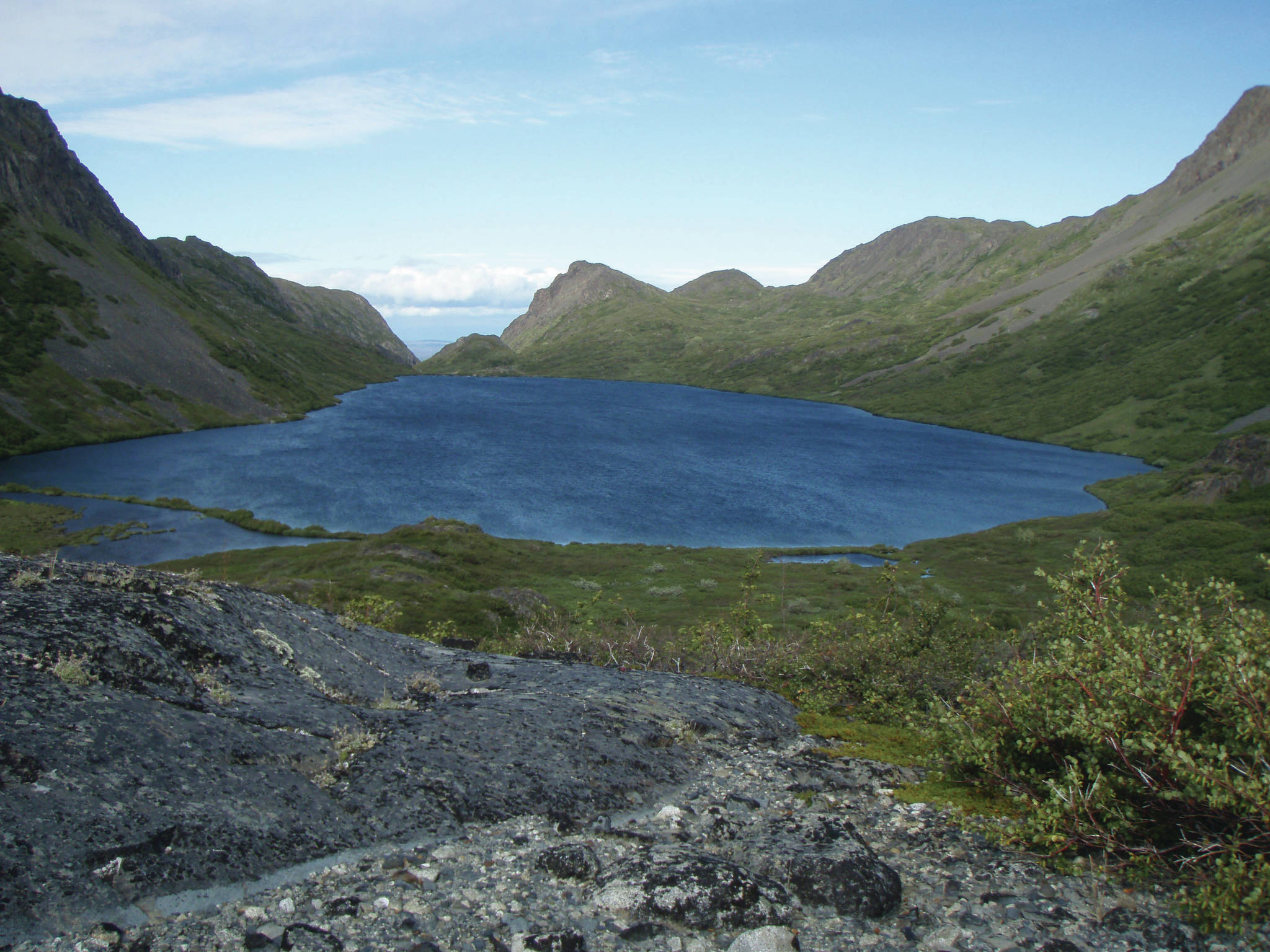The Kenai National Wildlife Refuge has much to offer to those seeking any number of outdoor experiences: hiking, camping, canoeing, fishing, wildlife viewing, hunting and photography, just to name more than a few.
You can spend time in the frontcountry, such as fishing the Russian River, a tributary of the world famous Kenai River, where you will encounter more two-legged critters than one can imagine.
You can drive the popular Skilak Loop Road and enjoy delightful vistas in the company of many tourists, locals and guided fishing groups.
Solitude can be tough to locate in midsummer in these areas unless you migrate off the beaten path to the backcountry. These are the places where quiet discovery happens and — if you are fortunate — no one else is in sight.
The backcountry is what I have come to enjoy here on the Kenai refuge, places like the Swanson River and Swan Lake canoe systems.
What could be more peaceful than traveling by canoe? It is quiet except for the occasional plane overhead. Waterfowl flush as you come around the bend. Coho salmon gently bump the underside of the canoe as they make their way to their spawning grounds.
I have had the good fortune of floating the Swanson River repeatedly over the years, stopping to check campsites and visit with hunters and anglers. They may be on a trip with family or friends to enjoy the peace and quiet, maybe fish for a coho salmon, or scout for a legal moose. I’ve been invited to camp for a cup of coffee and to share the experience of our respective wilderness trips.
Another fun backcountry experience is to travel by horseback in the Tustumena area. This provides a whole other level of enjoyment, and it is a great way to see the country.
I have had the pleasure of exploring the trails to the Tustumena Bench and meeting up with those lucky few who have been selected for a backcountry draw hunt permit.
These kinds of backcountry experiences are possible today partly because Congress established the National Wilderness Preservation System, which protects millions of acres of wilderness in Alaska and across the nation, through the Wilderness Act of 1964.
One purpose was to preserve these areas’ rich wilderness character that emphasizes natural diversity free of structures, commercial development and roads.
Within the Kenai National Wildlife Refuge, a total of 1.35 million acres of wilderness were designated with passage of the Alaska National Interest Lands Conservation Act, which also modified some provisions of the Wilderness Act to allow for the continuation of subsistence lifestyles and traditional activities.
Kenai Refuge Wilderness includes three separate congressionally designated wilderness areas: the Dave Spencer Wilderness Unit (formerly the Canoe Lakes Wilderness); the Mystery Creek Wilderness Unit, north of the Sterling Highway surrounding Skyline Trail and Fullers Lakes trails; and the Andrew Simons Wilderness Unit between Skilak and Tustumena lakes.
Andy Simons, for whom the Andrew Simons Wilderness Unit is named, was a local resident known for his conservation ethic, his reputation as a hunting guide, and his service with the Territorial Game Commission.
Dave Spencer, for whom the Dave Spencer Wilderness Unit is named, was the first refuge manager of what was then called the Kenai National Moose Range.
Spencer was a naval aviator in WWII. He began his career with the Bureau of Sport Fisheries and Wildlife at Everglades National Wildlife Refuge in 1946.
Spencer became well-schooled in the refuge planning process and played an important role in defending the wild and undeveloped character values of wildlife, fisheries and public use resources. Spencer utilized the planning process to bring about the establishment of the Swanson River and Swan Lake canoe routes, and he was instrumental in preventing further land withdrawals from the refuge.
A collective effort, spearheaded by Spencer, Dave Hickok and then refuge manager John Hakala, recognized the need to guide the growing uses of refuge resources after oil and gas exploration began in 1956, and allow for protection of unique areas and resources.
Campgrounds, trail heads and canoe routes would become a benefit to the visiting public. Today, the popular Swanson River and Swan Lake canoe trails are known for their miles of trail-connected lakes, rainbow fishing and solitude and are enjoyed by many throughout the long summer season.
Thanks to the work of Dave Spencer and many others, you can gaze out over areas like the Tustumena Benchlands. You can also soak in the remoteness and wildness that the old timers used to see situated in some of Alaska’s most stunning real estate like Emma Lake cabin, and wonder what lies beyond for hiking, wildlife encounters and solitude.
Just the thought of being alone out in the wilderness is such a welcome step away from the hustle and bustle of our technology-strapped world.
While it requires a bit more effort and planning, it is well worth it to explore the outstanding wilderness areas here on the Kenai refuge. As Theodore Roosevelt once said, “The farther one gets into the wilderness, the greater is the attraction of its lonely freedom.”
By KELLY MODLA
Kenai National Wildlife Refuge

